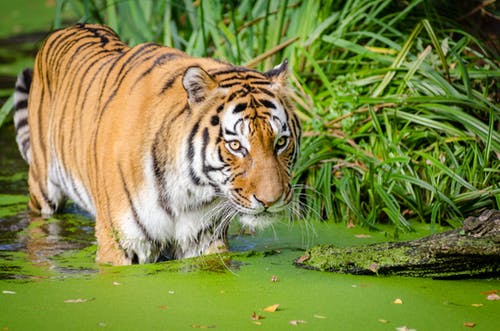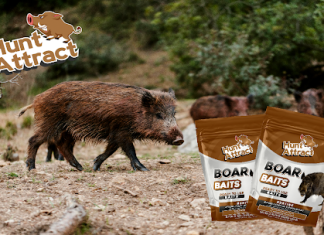Manas National Park, named after Goddess Manasa, is a
wildlife sanctuary. Declared as a UNESCO World Heritage Site in 1985, Manas
National Park is famous for its rare species of birds and animals. There are in
fact, around 380 species of birds found here. For a bird lover, there can’t be
anything better than discovering such wide diversity of birds. Also, many
endangered animals such as golden langur and the Assam roofed turtle are also
found in Manas National Park. Along with being a World Heritage Site, it was
also declared as a biosphere reserve, an elephant reserve and a Project Tiger
reserve.
wildlife sanctuary. Declared as a UNESCO World Heritage Site in 1985, Manas
National Park is famous for its rare species of birds and animals. There are in
fact, around 380 species of birds found here. For a bird lover, there can’t be
anything better than discovering such wide diversity of birds. Also, many
endangered animals such as golden langur and the Assam roofed turtle are also
found in Manas National Park. Along with being a World Heritage Site, it was
also declared as a biosphere reserve, an elephant reserve and a Project Tiger
reserve.
 |
| Manas National Park: An Ideal Destination For Birding |
However, here we are going to just concentrate on knowing
more about Manas National Park as an ideal destination for birding. So, this is
our list of some of the most popular species of birds found in Manas National
Park!
more about Manas National Park as an ideal destination for birding. So, this is
our list of some of the most popular species of birds found in Manas National
Park!
Table of Contents
1. Bengal Florican:
The Bengal florican belongs to the family of Otididae. Its
scientific name is Houbaropsis bengalensis. Also known by the name of Bengal
bustard, it is on the IUCN Red list of critically endangered species, with
fewer than a thousand birds being alive in 2017. The male adult floricans are
around 55 cm tall. The females are larger in size, with their weight being more
than the males. The male birds have a black plumage, except for their back,
which is brown and also, a part of their wings is white in colour. The females
are mostly brown, with different shades of the same colour throughout their
bodies.
scientific name is Houbaropsis bengalensis. Also known by the name of Bengal
bustard, it is on the IUCN Red list of critically endangered species, with
fewer than a thousand birds being alive in 2017. The male adult floricans are
around 55 cm tall. The females are larger in size, with their weight being more
than the males. The male birds have a black plumage, except for their back,
which is brown and also, a part of their wings is white in colour. The females
are mostly brown, with different shades of the same colour throughout their
bodies.
2. Red Junglefowl:
The red junglefowl belongs to the family of Phasianidae. The
binomial name of this tropical bird is Gallus gallus. It is commonly known as
the ancestor of the domesticated chicken. It has a mix of colours on its body,
ranging from the obvious red to gold to brown to green. The length of an adult
red jungle fowl is Between 43 to 76 cm. Besides all the other colours, one of
its most distinguishing features is the white patch at its lower back. These
birds are omnivorous by nature and mostly feed on insects as well as
invertebrates and seeds.
binomial name of this tropical bird is Gallus gallus. It is commonly known as
the ancestor of the domesticated chicken. It has a mix of colours on its body,
ranging from the obvious red to gold to brown to green. The length of an adult
red jungle fowl is Between 43 to 76 cm. Besides all the other colours, one of
its most distinguishing features is the white patch at its lower back. These
birds are omnivorous by nature and mostly feed on insects as well as
invertebrates and seeds.
3. Bulbuls:
The bulbuls are passerine songbirds that belong to the
family of Pycnonotidae. There are different species of bulbuls such as
greenbuls, bristlebills and brownbuls. They are short-necked, with their tails
long and wings short. Their length varies from 13 cm to as much as 29 cm. The
females are just a little smaller than their male counterparts. All bulbuls are
quite loud and they have a slightly nasal tone. They mostly eat fruits, nectar,
seeds, small insects and some small vertebrates. They are generally monogamous,
with a few exceptions here and there. The female birds lay a clutch of around 5
eggs at one time and the incubation is done only by them, not the males.
family of Pycnonotidae. There are different species of bulbuls such as
greenbuls, bristlebills and brownbuls. They are short-necked, with their tails
long and wings short. Their length varies from 13 cm to as much as 29 cm. The
females are just a little smaller than their male counterparts. All bulbuls are
quite loud and they have a slightly nasal tone. They mostly eat fruits, nectar,
seeds, small insects and some small vertebrates. They are generally monogamous,
with a few exceptions here and there. The female birds lay a clutch of around 5
eggs at one time and the incubation is done only by them, not the males.
4. Scarlet Minivet:
The scarlet minivet belongs to the family of Campephagidae.
Its binomial name is Pericrocotus speciosus. The male and female minuets differ
when it comes to looks. While the males are red with their upper parts being
black, the females are yellow and their upper parts are greyish olive. Their
diet consists of mostly insects and they catch them by flycatching. A clutch of
two or three eggs are laid by the female birds and they incubate those alone,
while the male birds bring food to eat. However, they both equally take part in
bringing up the young ones. As far as their tone is concerned, it’s sweet and
melodic.
Its binomial name is Pericrocotus speciosus. The male and female minuets differ
when it comes to looks. While the males are red with their upper parts being
black, the females are yellow and their upper parts are greyish olive. Their
diet consists of mostly insects and they catch them by flycatching. A clutch of
two or three eggs are laid by the female birds and they incubate those alone,
while the male birds bring food to eat. However, they both equally take part in
bringing up the young ones. As far as their tone is concerned, it’s sweet and
melodic.
5. Oriental Pied Hornbill:
The oriental pied hornbill comes from the family of
Bucerotidae. Its binomial name is Anthracoceros albirostris. It is also known
by the names of sunda pied hornbill and Malaysian pied hornbill. These are
among the most common Asian hornbills and are mostly found in tropical moist
lowland forests. They are around 55-60 cm long, with a wingspan of 23-36 cm.
The bill is quite evidently very long, being 19 cm for the male birds and 16 cm
for the female ones. They are mostly black and white in colour, with their
upper parts being black and under parts being white. The birds mostly eat
insects, fruits and small reptiles.
Bucerotidae. Its binomial name is Anthracoceros albirostris. It is also known
by the names of sunda pied hornbill and Malaysian pied hornbill. These are
among the most common Asian hornbills and are mostly found in tropical moist
lowland forests. They are around 55-60 cm long, with a wingspan of 23-36 cm.
The bill is quite evidently very long, being 19 cm for the male birds and 16 cm
for the female ones. They are mostly black and white in colour, with their
upper parts being black and under parts being white. The birds mostly eat
insects, fruits and small reptiles.
6. Brahminy Duck:
The Brahminy duck, also known as ruddy shelduck outside
India, belongs to the family of Anatidae. Its binomial name is Tadorna
ferruginea. It is mostly orange-brown in colour with the head being paler and
the beak and the tail being black. The wing coverts of the bird are white
though. It is generally 58-70 cm long and has a wingspan of 110-135 cm. Since
the Brahminy duck is a migratory duck, it doesn’t have any particular place to
stay. The female and male birds have a genuine bond and together they inhabit
water-bodies such as rivers and lakes. The females lay a clutch of around eight
eggs and incubate them alone for four weeks. Both the parents take active part
in raising the children.
India, belongs to the family of Anatidae. Its binomial name is Tadorna
ferruginea. It is mostly orange-brown in colour with the head being paler and
the beak and the tail being black. The wing coverts of the bird are white
though. It is generally 58-70 cm long and has a wingspan of 110-135 cm. Since
the Brahminy duck is a migratory duck, it doesn’t have any particular place to
stay. The female and male birds have a genuine bond and together they inhabit
water-bodies such as rivers and lakes. The females lay a clutch of around eight
eggs and incubate them alone for four weeks. Both the parents take active part
in raising the children.
7. Eastern Great Egret:
The eastern great egret, a subspecies of the great egret,
belongs to the family of Ardeidae. Its binomial name is Ardea Alba modesta. All
white in colour, the eastern great egret is around 83-103 cm long and weighs
0.7-1.2 kg. During the breeding season, its bill is black in colour. While at other
times, it’s yellow. Also, the colour of its face changes to green in the
breeding season. It has a very long neck, which helps to distinguish it from
the other white egrets. The Eastern
great egrets mostly feed on frogs, fishes, small reptiles and insects.
belongs to the family of Ardeidae. Its binomial name is Ardea Alba modesta. All
white in colour, the eastern great egret is around 83-103 cm long and weighs
0.7-1.2 kg. During the breeding season, its bill is black in colour. While at other
times, it’s yellow. Also, the colour of its face changes to green in the
breeding season. It has a very long neck, which helps to distinguish it from
the other white egrets. The Eastern
great egrets mostly feed on frogs, fishes, small reptiles and insects.














